| ChrisOLeary.com | ||||||||||||||||||||||||||||||||||||||||||||||||||||||||
| ChrisOLeary.com > BUY > Hitting > Short to the Ball | ||||||||||||||||||||||||||||||||||||||||||||||||||||||||
|
Because it's paradoxical. While the term Short to the Ball, as it's generally used, pertains to DISTANCE — as the length of the path the hands take to the ball — when it comes to hitting a good fastball, what really matters is TIME. What's most important, when it comes to hitting the fastball, is how long — in terms of TIME and NOT Distance — it takes the hands to get the sweet spot of the barrel up to speed and to the Point Of Contact. Due to factors like biomechanical Efficiency, a swing that is — truly — Short to the Ball is often LONGER in terms of Distance. But shorter in terms of TIME. The clip below of Albert Pujols shows just that; it shows Pujols being SHORT to the ball by being LONG to the ball. 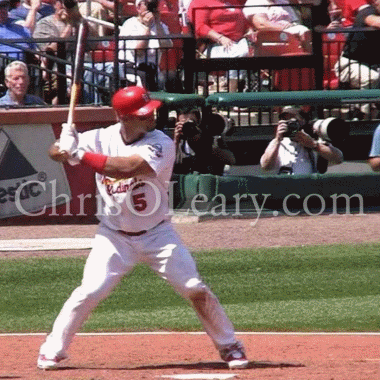
Albert Pujols
|
|
YEAR |
AVG |
SLG |
OBP |
|
2014 |
.298 |
.412 |
.369 |
|
2015 |
.263 |
.357 |
.350 |
|
2016 |
.311 |
.449 |
.400 |
|
2017 |
.334 |
.472 |
.420 |
|
2018 |
.286 |
.424 |
.387 |
|
2019 |
.276 |
.434 |
.354 |
And were one of the top offenses in all of NAIA.
Before I get into the details of what I mean by "Short to the Ball," I should mention that one of the most common reasons why hitters aren't is because of a flaw called...
Baseball & Fast Pitch
Short to the Ball is one of the most common phrases, and most important concepts, when it comes to hitting [1], regardless of whether you're talking about...
- Baseball
- Fast Pitch Softball
The problem is most discussions about the concept of being Short to the Ball are detached from reality.
They don't reflect what actually happens in the swings of complete hitters; hitters who can hit for BOTH power AND average.
Hitters like Albert Pujols...

Albert Pujols Home Run 2009
...at least in his prime.
Instead, they are too often based on...
...and ignore some of the...
- Paradoxes
...of how the human body works.
Or, at least, works BEST.
The result is a set of problematic concepts...
...and cues...
- (Hands) DIRECTLY to the Ball
- Keep You Front Elbow Down
...that don't reflect — or, worse, lead to players being coached out of — what the best baseball and fast pitch hitters do.
Actually.
As a result, they too often focus on what I call Phony Flaws...
Combine that with carnival attractions like HitTrax and a myopic focus on Exit Velocity at the expense of Swing Length and you've got a toxic — and too often fatal — to hitters' swings and dreams combination and a rapidly growing but still largely un-recognized problem.
Reality
 Everybody
talks about how hitters need to be short to the ball, but what
does that mean?
Everybody
talks about how hitters need to be short to the ball, but what
does that mean?
What do the best hitters do?
Actually?
I ask because, while being short to the ball is one of the keys — if not THE key — to the high-level swing, and to hitting at the highest levels of baseball and fast-pitch softball, a surprising number of people still seem to have no idea what the best hitters do.
In truth.
The HitTrax Effect
What's more, it's becoming increasingly difficult to achieve a swing that is (truly) short to the ball due to the proliferation of tools — or, in my opinion and experience, carnival attractions — like HitTrax that encourage hitters to develop long swings.
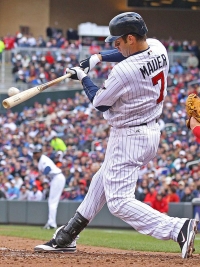 When
I look at clips of hitters on YouTube, I'm seeing more and more
of what I call HitTrax Swings; swings that look great in a cage
— that produce LOTS of towering cage bombs — but don't work in
games. In fact, I suspect HitTrax contributed to the struggles of Tommy Pham in 2016.
When
I look at clips of hitters on YouTube, I'm seeing more and more
of what I call HitTrax Swings; swings that look great in a cage
— that produce LOTS of towering cage bombs — but don't work in
games. In fact, I suspect HitTrax contributed to the struggles of Tommy Pham in 2016.
That's why, when I was working with the hitters at HSSU and had free access to a HitTrax system, I NEVER used it. Instead, I focused on whether my hitters were (truly) short to the ball.
And everything else fell into place.
Myths
The thing that got me thinking about the problem with hitting instruction — and how badly the concept of short to the ball is taught — was the release of Kevin Long's 2010 DVD.
And its cover artwork.

As soon as saw that picture, I knew there was something wrong with it, but I couldn't put my finger on what that was.
And then David Freese went off during the 2011 world series and I came across this picture of his Game Seven double.
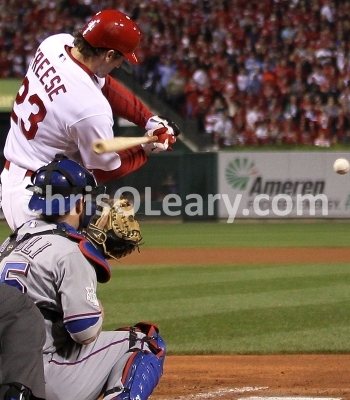
And I saw it.
Then, when David Freese fell apart in 2013, was a non-factor during the World Series, and was traded to the Angels, I saw it again.
Or, really, the absence of it.
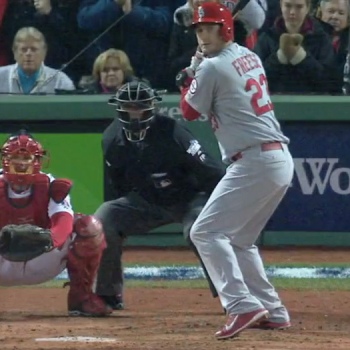
At the same time I was researching the idea of a "long swing" and was finding quotes like this one by Dave Hudgens — that I reference in my piece on David Hudgens and hitting mechanics — and that made clear to me the mainstream, MLB view of what they thought it meant to be short, and long, to the ball.
During the swing, the back elbow should come close to the rib cage and the barrel of the bat should stay above the hands. With a high back elbow, the elbow has to travel a much greater distance and at a much faster rate of speed. When this happens, the barrel of the bat will drop below the hands, the front elbow will rise, and you will have a long swing. If this goes on for very long, you have created a habit - a very bad habit.
I compared the words in that Dave Hudgens quote to what the video clips I was shooting showed.

Look at the clip above and focus on what Albert Pujols' back elbow does and compare and contrast it with Dave Hudgens' words.
And that led me to start digging into the reality of what the best hitters do and why.
Misconceptions
The biggest problem I see when people talk about the concept of being Short to the Ball is a basic one...
Focusing on BAT SPEED
and EXIT VELOCITY
Rather than TIME.
Bat Speed is great because it creates Exit Velocity and helps to get the ball to and over the wall.
But all the Bat Speed and Exit Velocity in the world are useless if you can't catch up to the fastball, while also giving yourself time to recognize, and adjust to, the curveball.
That makes how QUICKLY you can develop Bat Speed THE key and brings to light a second mistake...
Focusing on SPEED
Rather than ACCELERATION.
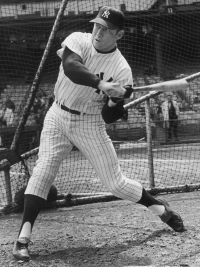 Unlike in slow pitch and golf,
where the ball is moving slowly or not at all, in baseball and fast pitch
the pitcher is trying to strike you out.
Unlike in slow pitch and golf,
where the ball is moving slowly or not at all, in baseball and fast pitch
the pitcher is trying to strike you out.
And is throwing HARD as a result.
That changes everything.
And brings up the third mistake...
Focusing on DISTANCE
Rather than EFFICIENCY.
Paradoxes
When Time becomes the main concern, Efficiency becomes critical.
However, and as the Brachistochrone Curve demonstrates, the quickest and most efficient movement and/or path is sometimes complicated.
Subtle.
Paradoxical.
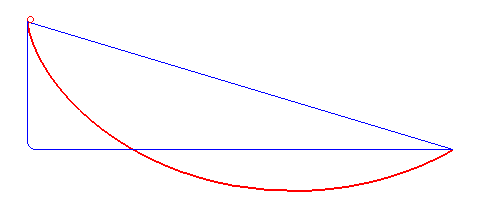
Yes, a straight line is the SHORTEST distance between two points. But, as the Brachistochrone Curve shows, and because of outside, hard to see, and hard to understand factors — a paradoxical subtlety — it isn't always the QUICKEST way to get there.
In the case of the Brachistochrone Curve, that paradoxical subtlety is the force of Gravity.
It gives the ball on the red slope a greater acceleration then the ball on the slanted slope.
The human body is similar.
For reasons of efficiency, biomechanical and otherwise, when you're talking about the human body, the most DIRECT path to the ball isn't always the FASTEST path to the ball.
In the case of the human body, that paradoxical subtlety is the Stretch Shortening Cycle.
And that's why so many discussions of what a short to the ball swing SHOULD look like don't match up with what the best hitters ACTUALLY do.
Which is why so many hitters fail to live up to their potential.
The Good
There are a number of ways that the concept of being short to the ball can help a hitter.
Hands Inside the Ball
One of the main phrases that you will hear in terms of being short to the ball is, "keep the hands inside the ball." The general idea is to keep from barring out the front arm and casting or sweeping the barrel around to he point of contact.
Applied correctly, that can increase the rate at which a hitter will be able to get the barrel around to the ball.
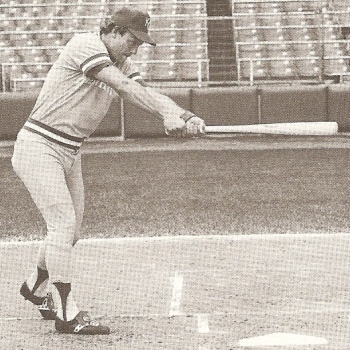
However, one of the problems that I have with teaching the concept of teaching extension at the point of contact is that it can very easily lead to casting.
Keep the Barrel Up
Many hitters with long swings actually have a problem with Bat Drag, a problem that typically affects kids but that you can see in the swing of major leaguer Mark Reynolds.
You can find any number of swing analyses on YouTube that describe the difference between a short swing and a long swing. In truth, these analyses are actually discussing the problem of Bat Drag.
One of the cues that is used to help (try to) create a short swing is to keep the barrel up. While that cue can create problems, especially when reinforced with certain drills, in moderation this cue can help a player develop the high-level swing by reducing a problem with Bat Drag.
The Bad
Unfortunately, while some ways of teaching being short to the ball will help hitters, the truth is that the best hitters aren't as short to the ball as is widely believed or taught. As a result, many well-intentioned fixes will tend to take hitters farther away from, rather than closer to, the high-level swing.
Hands Directly to the Baseball and Hitches
According to Don Mattingly, one of the characteristics of a swing that is short to the ball is that the hands go directly to the baseball. However, and as I discuss at greater length in my piece do as they did, not as they say, a problem quickly crops up if you compare Mattingly's actual swing to the swing that he now teaches.

While Don Mattingly may FEEL like he takes his hands directly to the baseball, in truth he loads his hands just before he launches his swing.
In many cases such loading movements are referred to as a hitch in the swing, particularly if they are relatively significant. However, this ignores that fact that you can see hitches in the swings of many of the best hitters.

You can see a small, Mattingly-esque hitch in the swing of George Brett.

Albert Pujols has a slightly larger hitch in his swing.
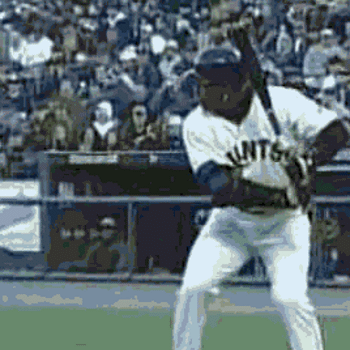
Barry Bonds, one of the greatest power hitters of all time (regardless of the steroid thing) had a very large hitch.
I'm not saying that a hitch is never a problem. Of course, it can be. What I am saying is that too often, in a well-intentioned attempt to simplify the swing, you can over-simplify it and remove the thing that makes it effective (much less powerful).
Chicken Wings, Loops, and Uppercuts
While I absolutely loved watching Tony Gwynn hit, his hitting instruction tends to make me cringe. The biggest problem is that he coaches people out of doing what he himself did.
To Tony Gwynn, one of the biggest flaws that lengthens the swing is when the front elbow rises up, causing the barrel to drop and loop around the hands. The problem is that you can see Tony Gwynn do just this in the clip below.

As I discuss at length in my piece on keeping the barrel above the ball and the hands, that may work for some as a cue, but it doesn't reflect reality.

Bat Path
Perception vs. Reality
While the hitter's perception may be that they are taking the hands and the barrel directly to the ball, the reality is quite different.
The Ugly
Again, that isn't necessarily a problem when used as a cue, and it can often be helpful, but problems arise when those cues are reinforced with drills.

Given that the product of this drill is a ground ball, why would anybody expect the result of this swing to be something different in a game situation?
In Sum
At the end of the day, too often the phrase "short to the ball" is simply used to describe hitters who can hit. Similarly, the phrase "long swing" is used to describe hitters who can't hit. While in some cases hitters can hit because they do the things that people mean why they use the term "short to the ball," in many more cases hitters can hit despite not being short to the ball, at least as it's defined. That should lead us to take a closer look at what we mean when we use phrases like "short to the ball" and "long swing."
The Biggest Problem
The single biggest problem when it comes to being short to the ball is a VERY common flaw that goes by the name of...
For More Information
I have put together a number of essays that discuss ideas related to the topic of being short to the ball...
About the Author
The ideas discussed in this and my related pieces on Hitting...
...have helped transform the swings, approaches, and careers of multiple major leagues hitters. With my help...
- Andres Torres put up 6.3 WAR in 2010.
- Mark Trumbo hit a best in baseball 47 home runs in 2016.
- Tommy Pham put up 6.1 WAR in 2017.
As Andres Torres said in 2012...
I know about training, but hitting was difficult. And then in ’08... There’s a guy called Chris O’Leary (a St. Louis fan who kept online flipbooks breaking down Pujols’ swing). He’s online. He talks about Rotation. He's got video examples of Pujols, and I watched those.
- Andres Torres 2012
Most recently, I helped reinvigorate the offense of HSSU, an NAIA baseball team and HBC for whom I was the Hitting Coordinator from February 2016 thru February 2017.
|
YEAR |
AVG |
SLG |
OBP |
|
2014 |
.298 |
.412 |
.369 |
|
2015 |
.263 |
.357 |
.350 |
|
2016 |
.311 |
.449 |
.400 |
|
2017 |
.334 |
.472 |
.420 |
|
2018 |
.286 |
.424 |
.387 |
|
2019 |
.276 |
.434 |
.354 |
While it pains me to see the guys at HSSU regress since I left, I hope it makes it clear that I know what I'm talking about.
Become a Client
My clients have access to my Streaming DVD and a number of other resources that explain the High-Level Swing.
Notes
1. One mistake people make is drawing parallels between very different sports. Baseball and Fast Pitch Softball are the same basic sport, at least when it comes to hitting, because both involve a pitcher who is throwing the ball hard and changing speeds and locations in an attempt to strike the batter out. And, no, the RiseBall doesn't change that; when it's thrown FOR A STRIKE, hitting a RiseBall is no different than hitting a 4-Seam fastball in baseball. Golf is very different because the ball isn't moving, which means ideas don't translate directly. The same is true for Slow Pitch Softball because the ball isn't moving quickly.

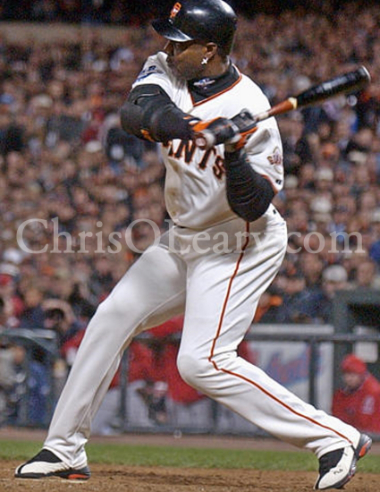 Short
to the Ball is one of the most commonly used, and misinterpreted,
phrases in hitting.
Short
to the Ball is one of the most commonly used, and misinterpreted,
phrases in hitting.